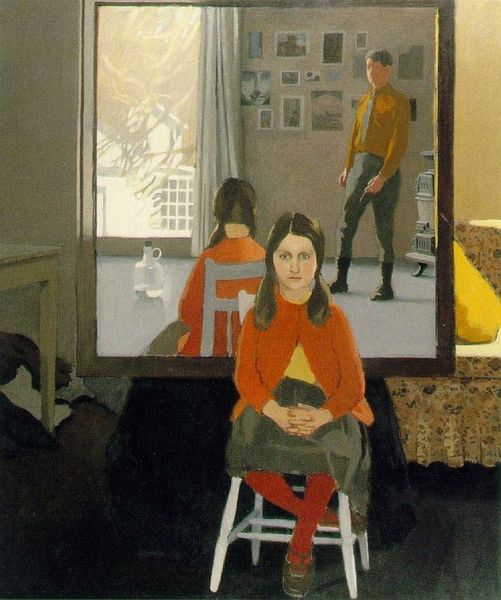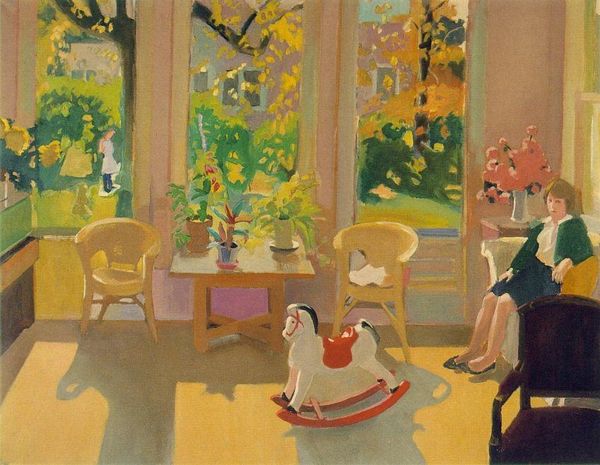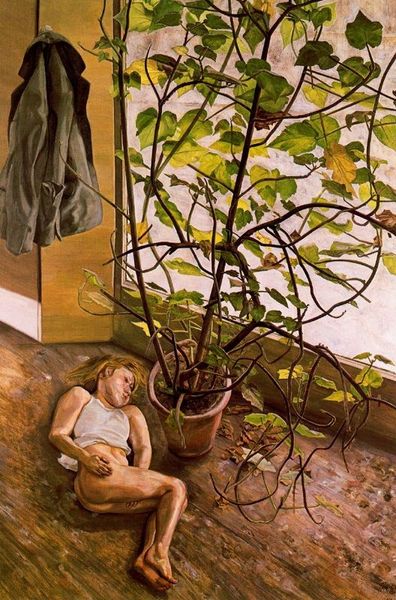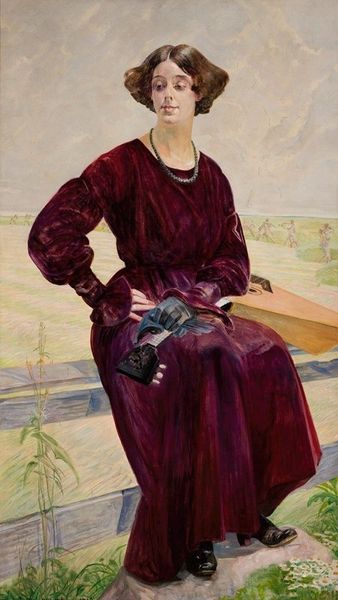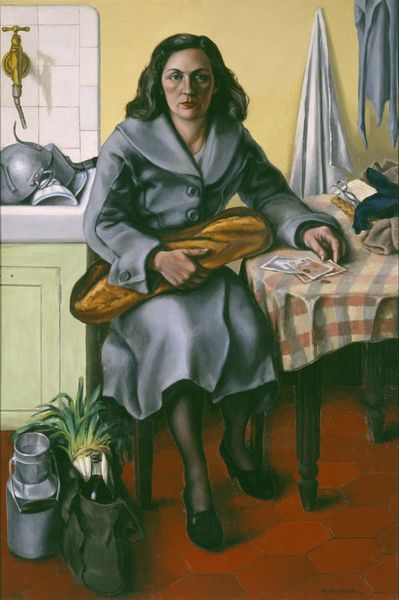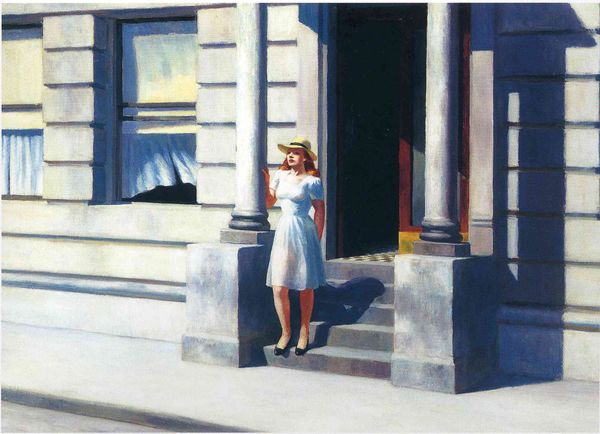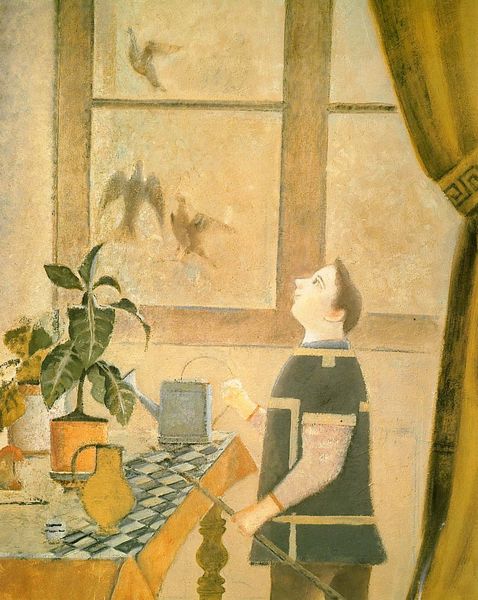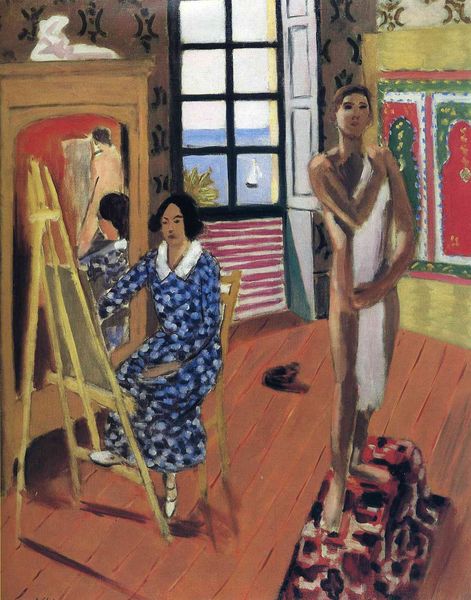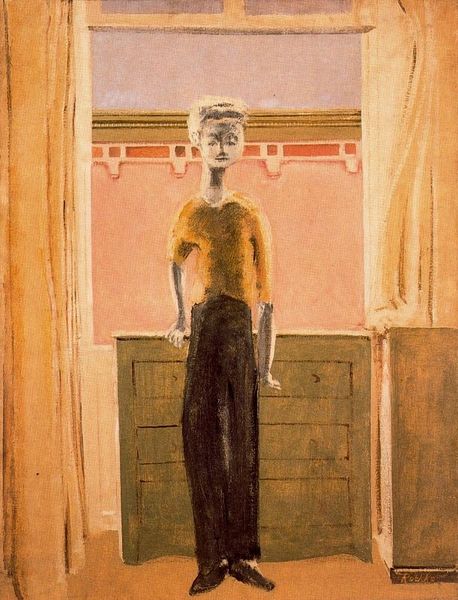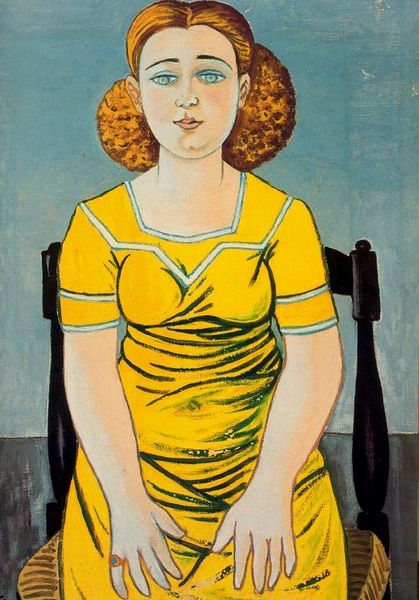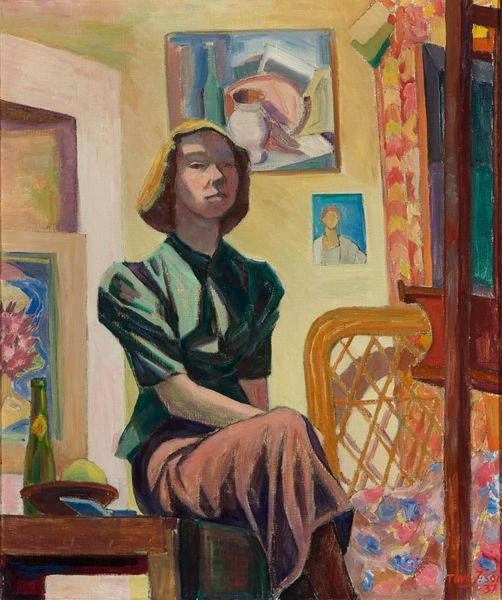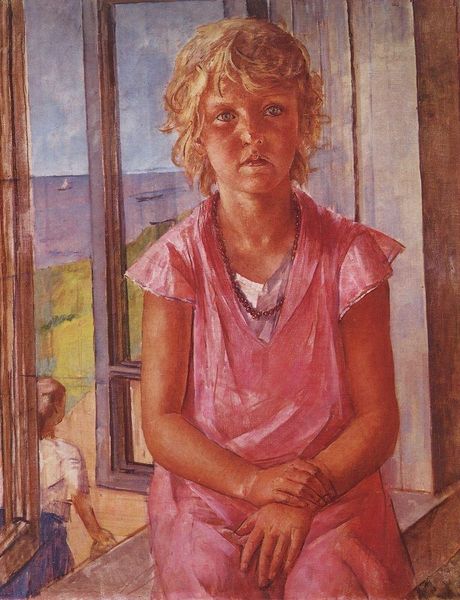
painting, oil-paint
#
painting
#
oil-paint
#
landscape
#
oil painting
#
portrait art
#
modernism
#
realism
Copyright: Fairfield Porter,Fair Use
Curator: Fairfield Porter's "Anne in a Striped Dress," dating to 1967, presents us with a portrait in oil on canvas. What strikes you first about it? Editor: It's the sheer domesticity, but with a melancholy edge. The colors are muted, the pose is formal, yet there's an undeniable intimacy. What about the actual painting process interests you in particular? Curator: Immediately, the subject's dress speaks to me. The vertical stripes draw the eye down, only to clash with the horizontal pattern across the bodice. It looks handmade, which invites considerations of domestic labor, and what that signifies in American postwar culture. Also the red shawl lying on the chair to the left and the various other pieces of framed artwork displayed. Those feel almost performative. What story do they weave for the viewer? Editor: Perhaps one of refined intellect mixed with artistic inclination. I note how the surrounding interior—the art on the wall, the window overlooking the outdoors—defines the sitter in relation to her social sphere. A commentary on how social institutions shape our identity and reception, would you say? Curator: Certainly, the sitter is framed by the artist’s choices. Was this Porter’s own domestic sphere or an idealized representation, or even something to be marketed and sold later? And what statement does a domestic interior presented so realistically suggest at this point in the late sixties? Editor: I am taken with the sitter's gaze, averted yet steady. In terms of portraiture and politics of imagery, she asserts her independence within that space. A quiet challenge to patriarchal societal norms, perhaps? Curator: Or a portrait for the market made to look more critical. It really makes me question assumptions around skill, material and presentation. And the relationship between artistic production and societal value is key here, of course. Editor: Absolutely, and the painting’s afterlife in collections and exhibitions continues that dialogue, doesn't it? We help shape those discussions. Curator: It reminds me that artistic interpretation is a perpetually shifting landscape, especially as seen within a historic building itself constructed and sustained over centuries of cultural shifts and evolutions of materials and makers. Editor: Exactly. And to engage with this painting is to acknowledge those layers, both then and now.
Comments
No comments
Be the first to comment and join the conversation on the ultimate creative platform.
